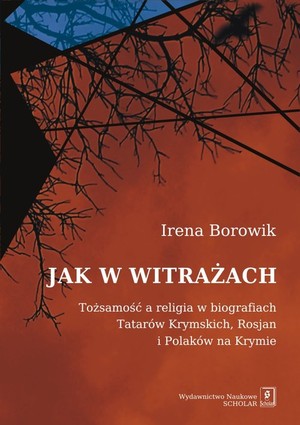Prof. Irena Borowik from the JU Institute of Sociology on the identity of Crimea's populace

Crimea, which has been the centre of world's attention for the past several weeks, is truly a cultural and religious melting pot. What is religion's influence of Russians, Tartars and Poles that live there? Prof. Irena Borowik form the JU Institute of Sociology tries to answer this question in her recently published book, Jak w witrażach [Like stained glass].
The book is a result of field work conducted in the years 2009–2009. The main goal of the author was to research the role of religion in constructing, sustaining and changing identity in the three abovementioned ethnic groups.
A mosaic of peoples and faiths
Before the current crisis, there were about 2 million people in Crimea, divided into 134 groups according to their nationality and ethnicity. Most of them – 58% – were Russians; Ukrainians comprised 20% of the population, and the Tartars – 13%. Among other inhabitants of the Peninsula were Belarusians, Moldovans and Poles – according to the 2001 census, there were nearly 4 thousand of them.
The chief method employed by Prof. Borowik, who is an expert in the field of history of religion, was a series of interviews with Russians, Tartars and Poles. The two former were an obvious choice, with Russians being the dominant nationality and Tartars being an ethnic group native to the region. Including the relatively sparse Polish minority is less evident; however, its inclusion was influenced by religious criteria. There are a lot of Catholics among the Poles in Crimea, whereas the Tartars are predominantly Muslims, and the Russians – Orthodox. Thanks to this, Prof. Borowik was able to present the diversity of religious beliefs in her study.
Religion and identity
After decades of state-enforced atheisation in Crimea and other parts of former Soviet empire, religiousness started coming back to life. Alongside the golden domes of Orthodox churches, slender minarets of mosques were raised by Tartars in the Peninsula.
Through her interviews, Prof. Borowik determined that currently for the most inhabitants of Crimea, faith and religious rituals are a very important point of reference. "Religion is an important aspect of creating not only individual and social identity, but also in role identity. It is most visible in the case of Crimean Tartars, where gender roles (man vs. woman, husband vs. wife) as well as age roles (being a child vs. being old) are constructed with close ties to religion," Prof. Borowik explained.
Russian-Tartar enmity
Prof. Borowik notices that there is a very strong enmity between the Russians and the Tartars. It stems from historical reasons: the Tartars returned to their homeland in the 90s from Central Asia, where they were resettled on Stalin's orders.
The then inhabitants of Crimea, mostly Russians, but also other Slavic peoples, including Poles, greeted the repatriates with dislike or even outright hostility. Because of that, mutual animosity was born. "The Slavs" often looked at the returning Tartars as those who came to steal "their" land, while the repatriates blamed the Russian-speaking populace for its negative attitude.
In a commentary to the recent events, the scholar emphasises that the annexation of Crimea by Russia is another dramatic episode in Crimean history, one that can further deepen the Russian-Tartar antagonism.
Prof. dr hab. Irena Borowik from the JU Institute of Sociology Department of Social Anthropology is interested in sociology of religion: theories of religion, empiric studies of religion in Poland and the world, transformations in East Central Europe and methodology of research. She is an author of numerous national and international publications, the editor of dozens of Polish- and English-language papers as well as the originator and coordinator of the Sociology of Religion series. She is a member of several academic organisations and editorial boards of a number of magazines. Since 1991, she is the director of NOMOS Publishing House.
Source: naukawpolsce.pap.pl
Published by: Mariusz Kopiejka

